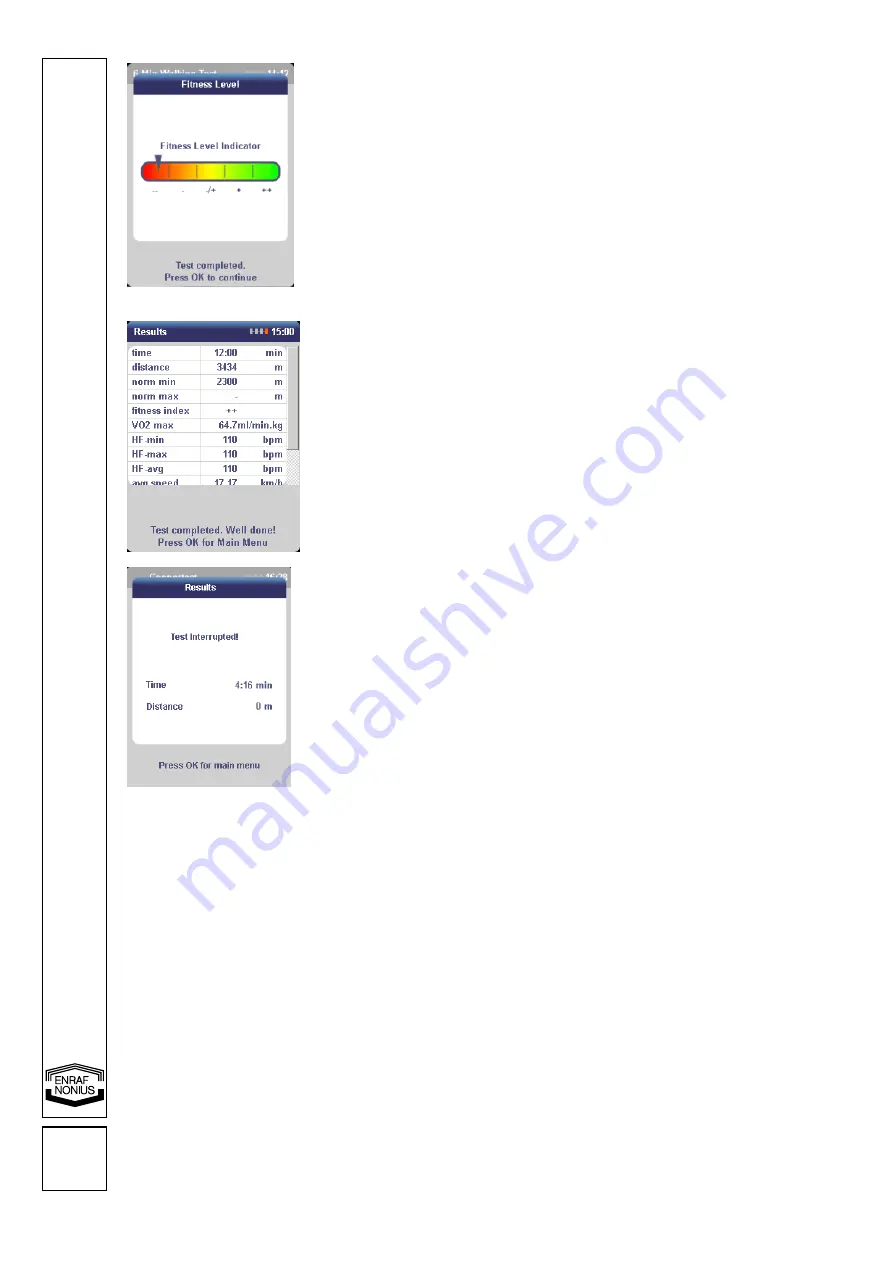
48
EN109-1665751-44
After the test has ended, a screen which
gives the user an indication of his or her
fitness level will appear.
It is possible to distinguish between the
following levels:
- - poor
- moderate
-/+ reasonable/average
+ good
++ very good
For a detailed overview of the test results,
you must press
OK
.
After the test has ended, the
Results screen
will appear.
Note the results and record them on the
results form (see appendix) so that they can
be added to the patient record at a later date.
Allow the person taking the test to cool down
and stretch.
Press
OK
to return to the
Main menu
.
Comment: pressing the
STOP button
will
bring the test to a premature end and the
screen shown on the left will be displayed
instead of the
Results screen
.
Press
OK
to return to the
Main menu
.
10.5.3
6-minute walking test (6MWT)
Exertion tests are no longer reserved for top athletes, but are also useful for patients with chronic diseases. For
example, the 6MWT can be used with the elderly and patients with rheumatic diseases, but is mainly suitable
for patients with a poor functional status, such as patients with serious heart and lung diseases.
The 6MWT is an intensive exertion test which can be used to establish and evaluate the functional exertion
capacity of a patient. The six minutes are derived from halving the well-known Cooper test, which lasts twelve
minutes (Butland e.a., 1982; Cooper, 1968). Walking has been selected as the intensity level as this is already
fairly intensive for many chronically ill patients (Paap e.a., 2002).
In most cases, the 6MWT is a submaximal test. In some patients, however, mainly patients with serious heart
and lung diseases, you must bear in mind that the test may range from very intensive to maximal. Amongst the
elderly, the 6MWT tends to be a submaximal rather than a maximal exertion test. The exertion required usually
corresponds to the performance of daily activities.
The test has proved reliable in a large number of patient groups (Sadaria and Bohannon, 2001). The 6MWT
has mainly been validated and tested for reliability in COPD patients and patients with heart failure (Sadaria
and Bohannon, 2001; Solway e.a., 2001).
In patients with better functional status, other walking or cycling tests are more suitable, as these reflect the
maximal aerobic exertion capacity better than the 6MWT. However, the 6MWT can still be used, for example
as is the case with rheumatic diseases such as fibromyalgia, arthrosis and rheumatoid arthritis (Gowans e.a.,
















































